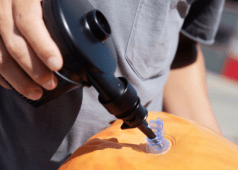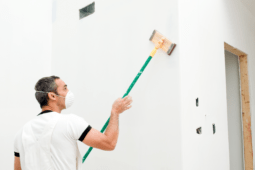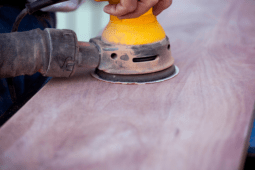ManMade Essential Toolbox: Why You Definitely Need a Japanese Pull Saw
ManMade is sharing our picks for the essential tools we think every creative guy and DIYer needs. We've selected useful, long-lasting tools to help you accomplish a variety of projects, solve problems, and live a hands-on lifestyle that allows you to interact with and make the things you use every day. Today: the Japanese saw.

I am, by no means, a traditionalist. I say the best tool for the job is always the tool that will produce the best results. Take my love for cast iron cookware: I don't prefer it because its old time-y, nostalgic, or because it's what my grandpa would have used. (My grandpa was kind of a jerk). I love it because it's often the best surface with which to cook; and when it's not, I'll gladly reach for a stainless steel pan or a piece of non-stick.
The same applies to woodworking and DIY tasks: I'm happy to use powered tools – saws, sanders, planers, jointers – in my projects if they allow me to work faster and smarter. And I do; I use them in almost everything I make.
But here's the deal: sometimes, the powered option is not the best tool for the job, and there are many cuts for which you should leave the table saw, the miter saw, or the jig saw behind. And in those cases, what you should grab is the Japanese pull saw.
Okay, so what's the deal with Japanese saws? They're called pull saws because the teeth are angled to cut on the pull stroke. Whereas, western saws are designed to cut on the push stroke. You can see the difference between the two styles of teeth set in this photo:

In this case, the handles are to right, and there's a Western style saw on the top, and a Japanese saw on the bottom. See how that works? Opposites.
Given that, why hand saws in the first place? And, why, specifically, Japanese-style pull saws?
Why Use a Japanese Saw?
1) They make short work of cutting tasks. As quick as a circular saw or table saw? Maybe not; but I have a small shop, and my tools aren't always set up ad ready to go. They must be moved into a secure area, plugged in, dust collection attached, tested, and then I have to grab safety glasses, etc, before I can start measuring and get to work. When making simple cuts for a household task, it's often easier, quicker, and cleaner to simply grab a hand saw, make the cut, and get back to whatever you're working on.
Plus, when you're experimenting and cutting non-standard building materials – i.e. not solid lumber or plywood – there's no spinning blades to account for, and no worries about safety, flying parts, or grain tear-out. This is especially true when not cutting dimensional or milled lumber which doesn't have a guaranteed flat face and edge (see photo at top).
2) They're lightweight, and require no power. Duh, but this one's important. This past winter, I had to make an unlikely kerf in my roof to allow me to secure our Christmas lights. I was already on a 12-foot extension ladder, and appropriately nervous. When I realized what needed to happen, I could have set up a long extension cord, got the circular saw, checked the cutting depth, and then have spun a terrifying machine of death with one hand while carefully balanced way off the ground, worrying about kickback the entire time, knowing that any snag or jostle could see me sailing. Or, I could just grab my hand saw, move it, like, twelve times, and get back to my holiday cheer. Guess which one I chose.
3) They can help you make stopped cuts with no set up. Let's say you need to notch out the corners of a piece of thin plywood for a shelf. You could draw your lines, get out the jigsaw, plug it in, and try to prevent the plywood from vibrating and flopping around while your try to stay on your line without going past your stop mark. Or, you grab a ryoba, use one side to rip with the grain, the other to cross cut with the grain, and you're done. See where I'm going with this?

So, which Japanese sawshould you get?
The most versatile type is called a ryoba – which features rip teeth on one side, and crosscut teeth on the other – i.e. two tools in one. The other popular style is a dōzuki, which has a stiffening strip along the back edge, rather than another cutting surface. There are also, of course, flush cut saws (azebiki) and saws for cutting curves, akin to a keyhole or coping saw (mawashibiki).
If you're just getting started, it's hard to beat the $40 for a proper ryoba. They're incredibly versatile, and there are a variety of teeth styles for course (fast) or fine (precise) work. I have a few fine English-style joinery saws for dovetails, etc, but I actually don't own any traditional western panel saws (you know, the “saw” looking saws that your dad had), and honestly, I've never needed them.

ManMade Recommended Japanese Saws:
- The Starter Saw: Shark Corp 10-2440 Fine Cut Saw
- The All-Purpose: Gyokucho 9-1/2″ Double Edge RazorSaw
- For the joiner: Dozuki Dovetail Saw
- For Your Toolbox: Shark 10-2204 Dowel/Dovetail/Detail Saw
- Fine Woodworking: 10-2720 Takumi Ryoba 9-Inch Fine Cut Double Blade Saw









